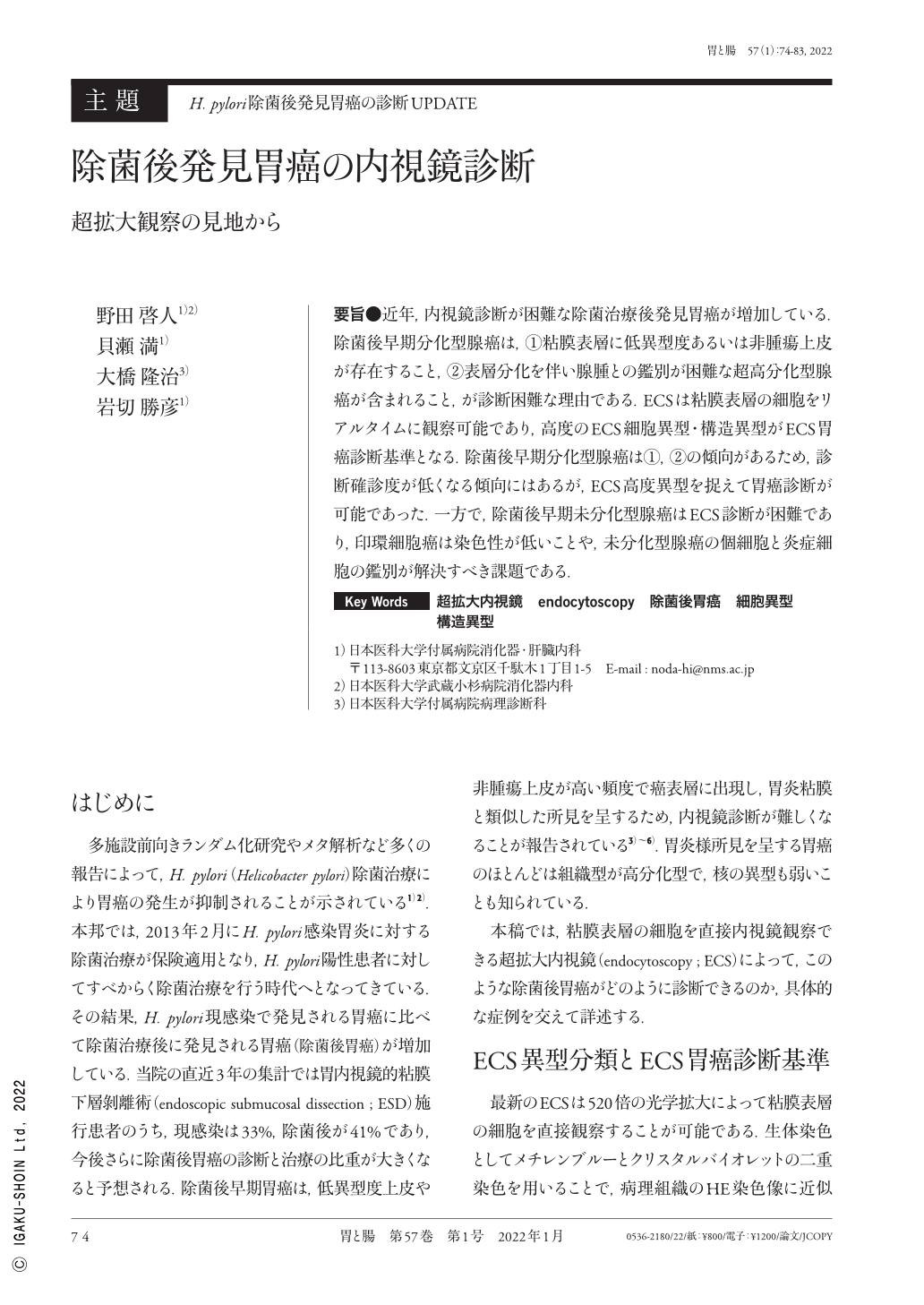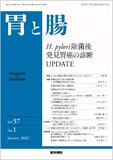Japanese
English
- 有料閲覧
- Abstract 文献概要
- 1ページ目 Look Inside
- 参考文献 Reference
要旨●近年,内視鏡診断が困難な除菌治療後発見胃癌が増加している.除菌後早期分化型腺癌は,①粘膜表層に低異型度あるいは非腫瘍上皮が存在すること,②表層分化を伴い腺腫との鑑別が困難な超高分化型腺癌が含まれること,が診断困難な理由である.ECSは粘膜表層の細胞をリアルタイムに観察可能であり,高度のECS細胞異型・構造異型がECS胃癌診断基準となる.除菌後早期分化型腺癌は①,②の傾向があるため,診断確診度が低くなる傾向にはあるが,ECS高度異型を捉えて胃癌診断が可能であった.一方で,除菌後早期未分化型腺癌はECS診断が困難であり,印環細胞癌は染色性が低いことや,未分化型腺癌の個細胞と炎症細胞の鑑別が解決すべき課題である.
The incidence of gastric cancer detected after Helicobacter pylori eradication, which is difficult to diagnose endoscopically, is increasing. The difficulty in the diagnosis of early differentiated adenocarcinoma after eradication are due to low atypia or nontumor epithelium on the mucosal surface layer and ultra-well-differentiated adenocarcinoma that is difficult to distinguish from adenoma due to surface layer differentiation. ECS(endocytoscopy)allows real-time observation of cells on the gastric mucosal surface and, consequently, the identification of high-grade ECS cell atypia/structural atypia, a diagnostic criterion for ECS gastric cancer. Early differentiated adenocarcinoma after eradication suggests a low risk of ECS cancer diagnosis ; however, ECS could be diagnosed in the presence of high-grade ECS atypia. Conversely, ECS diagnosis is difficult in early undifferentiated adenocarcinoma after eradication. Signet-ring cell carcinoma has low stainability, and the differentiation between poorly differentiated adenocarcinoma cells and inflammatory cells remains a diagnostic challenge.

Copyright © 2022, Igaku-Shoin Ltd. All rights reserved.


